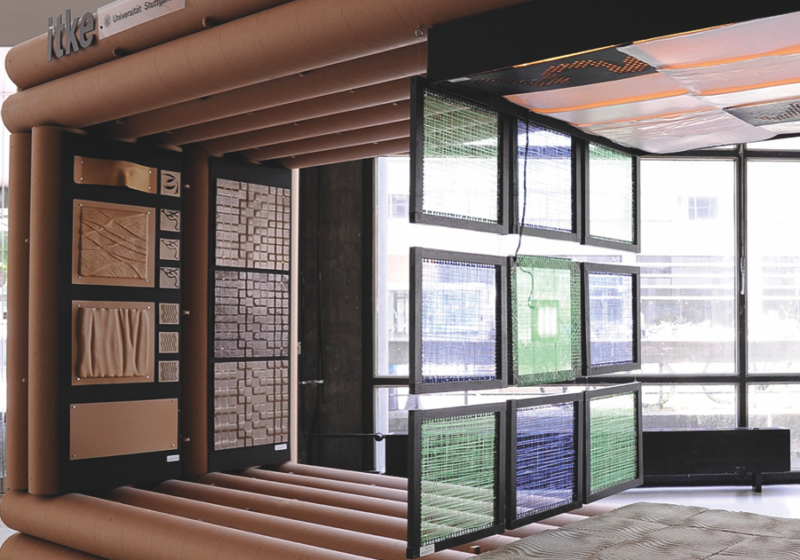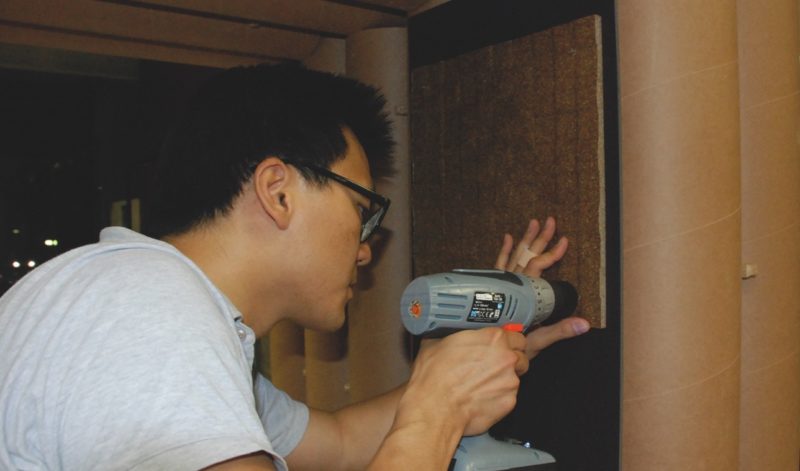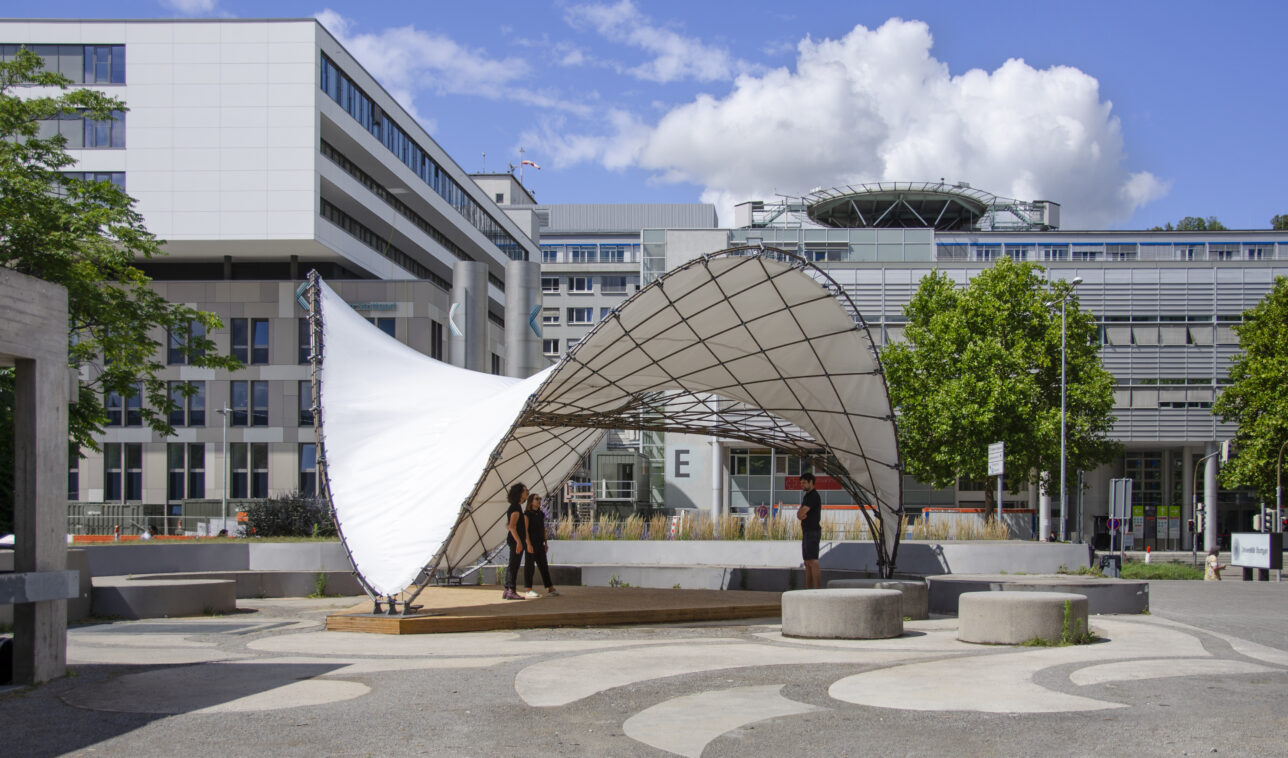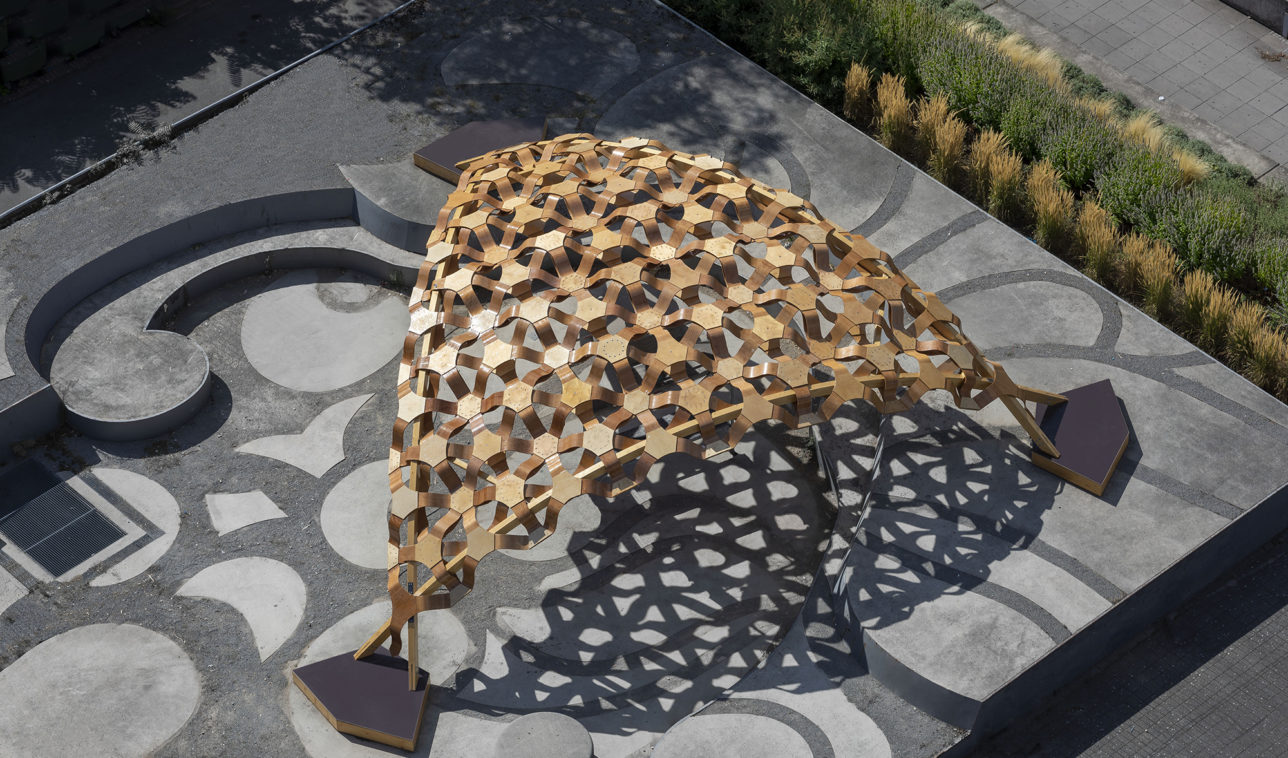A zero-waste ecological research pavilion of scale 1:1, made of 100% recycled materials and bio-based components.
Concept: Simulation of an architectural ecological space, ready for temporary usage, of minimum 5 years, with a complete cradle to cradle® concept
Cooperation: Architecture office Grosse in Stuttgart, 20 architecture students, 15 academic institutes and companies sponsorship
Planning and preparation: 6 months
Building duration: 4 days
Cooperation: Architecture office Grosse in Stuttgart, 20 architecture students, 15 academic institutes and companies sponsorship
Dimensions: L 4.00 x W 1.08 x H 2.00 m, Volume = 8.64 m3
Exhibition: August 2011: Faculty of Architecture, University of Stuttgart.
October 2011: Öko-Messe, Erdmannhausen, Germany.
The concept of the eco-pavilion shown at the University of Stuttgart in the Summer Semester 2011 and at the Öko Messe in Erdmannhausen, lies between recycling activities and biocomposites manufacturing. The aim of the pavilion was the demonstration of different manufacturing and application techniques of recyclable and recycled green biocomposites with low or no carbon footprints, to simulate future possibilities of Zero CO2 emission houses features. The pavilion is a 1:1 prototype (with a total volume of approx. 8.00m3) of a simulated 1-story space, that can be applicable in housing projects.
Many of the products presented in the pavilion can be found here.
Students were involved in the design and construction of the pavilion under the seminar title “Do It Yourself” with supervision of Jun.-Prof. Dr.-Ing. Hanaa Dahy. A group of 20 students had the task to design the cladding materials and non-structural architectural products following the overall focus of recycling and recycled materials. The students purchased the material and developed their ideas within a cooperation of 15 companies an academic institutes from South-Germany.
A special acknowledgement goes to Dipl.-Ing. Architekt Werner Grosse (leader of the architectural office Grosse-Architektur in Stuttgart), who was responsible for the design and development of the structural system made from recycled cartoon.





Recent Comments